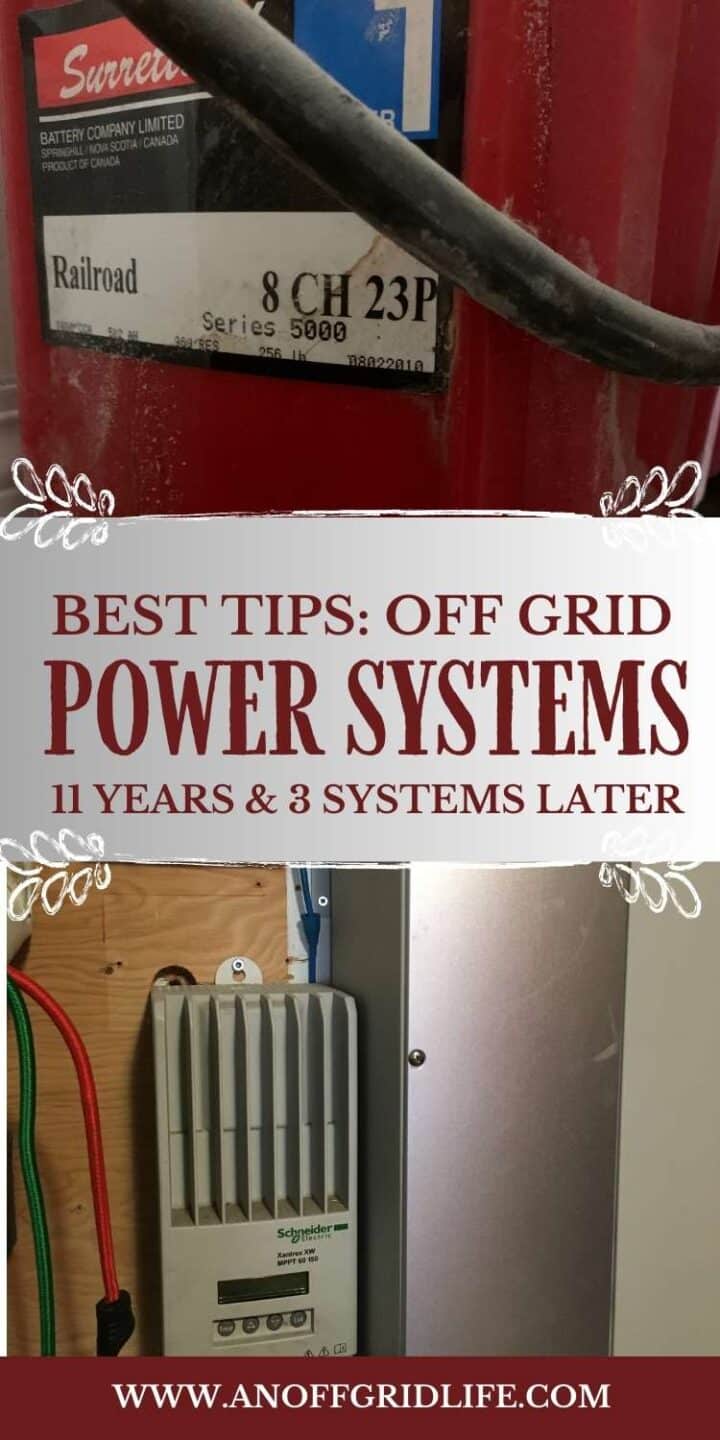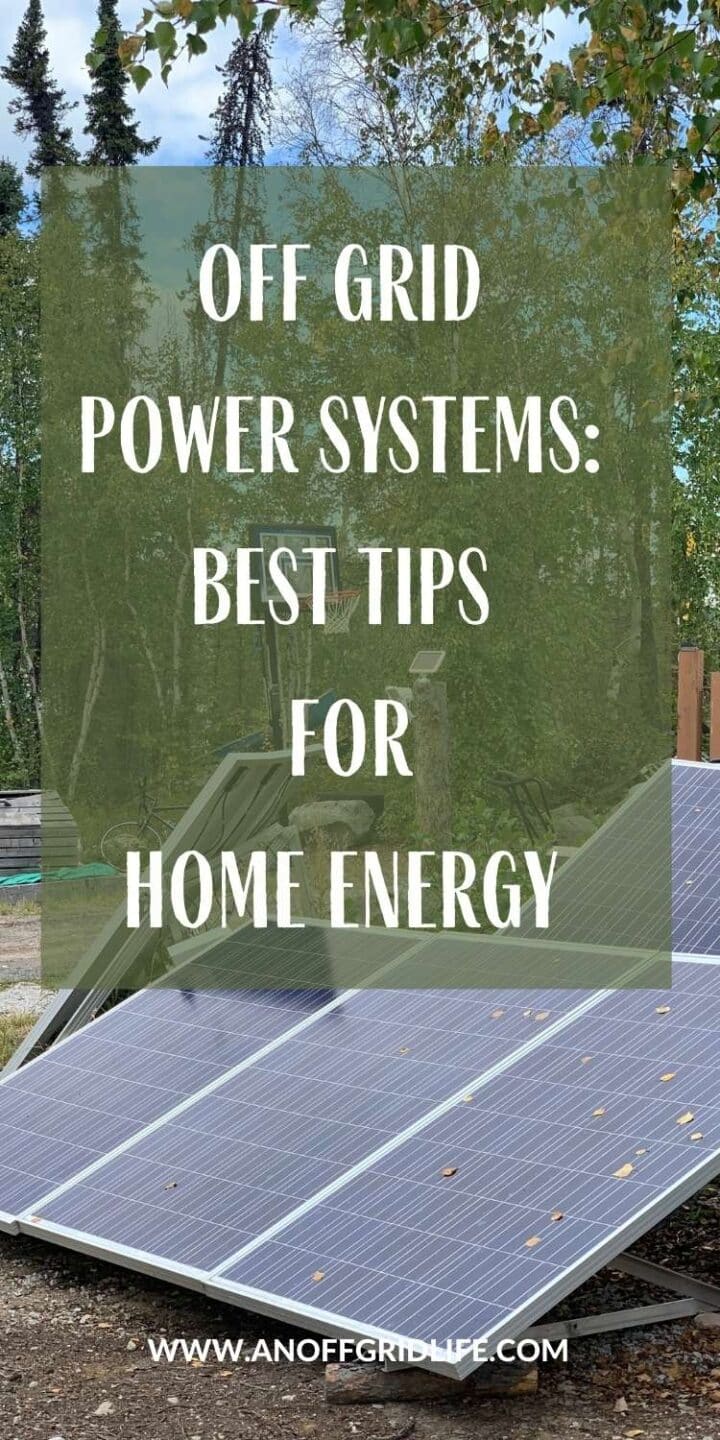Have you ever dreamt of an off grid power system, cutting ties with the utility company, and becoming energy independent? I did. And eleven years ago this week, we moved to our off grid home in the Canadian subarctic.
Looking back, I was woefully unprepared for living off the grid. Yet it is totally doable, as long as you learn the basics of off grid power. Here's what to know about off grid power systems when you don't even know where to begin.
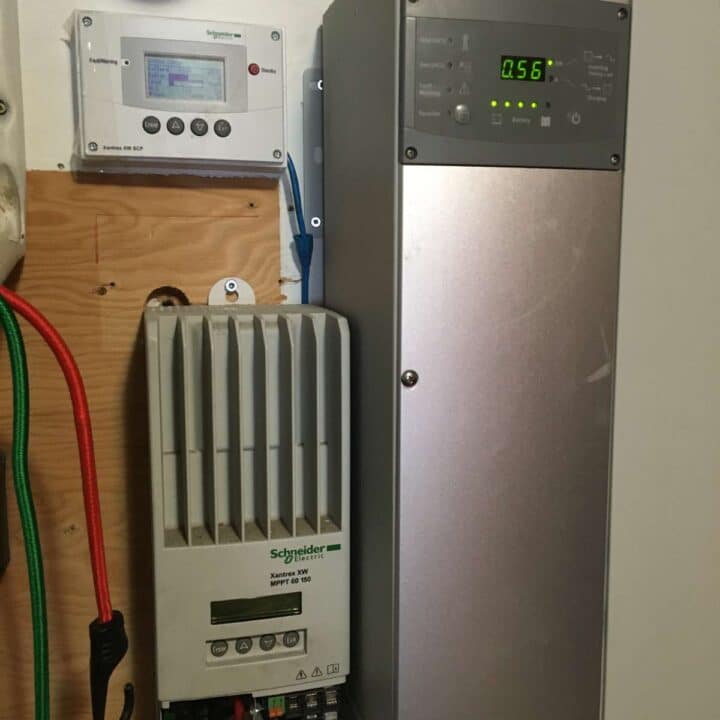
Estimated reading time: 20 minutes
It's never been easier to power your off grid home with wind, solar, or even water.
As you journey towards self-sufficiency, you could soon enjoy solar panels soaking up sunlight, battery banks storing precious power for later use, or charge controllers managing the flow of electricity. At the same time, inverters convert DC to AC power that is usable in your home. We used this setup for many years before upgrading to our current Tesla 2 powerwall system.
An off-grid power system is about more than just saving on electric bills or escaping unexpected blackouts. It's also an active step toward reducing carbon footprint and promoting renewable energy sources.
Off-Grid Power Systems: The Basics
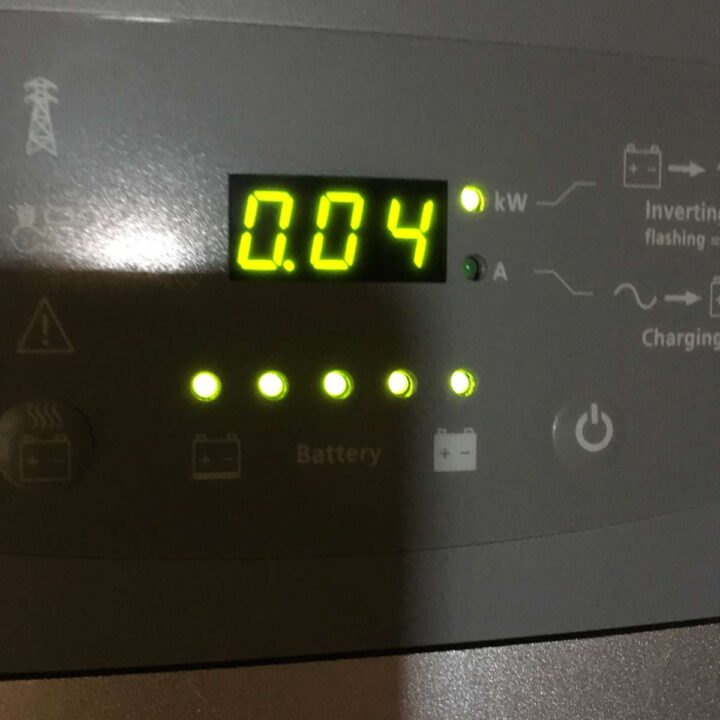
If you dream of energy independence and a smaller carbon footprint, it might be time to explore off-grid power systems. These renewable energy sources work well for remote locations where extending power lines from the grid might not be an option due to accessibility and price.
For example, we live about a half-hour drive from Yellowknife in Canada's Northwest Territories. All the homes around us depend on off grid power systems, water systems, and toilet systems. It's too expensive to run the grid this far from the city.
So, what is an off-grid power system anyway? For this article, It's a standalone unit that generates electricity from renewable resources like sun or wind without any connection to a utility company's electrical grid. And by the way, if you're interested, recently I've been researching on-grid vs off-grid alternative energy systems.
Solar panels convert sunlight into off grid electricity. And wind turbines harness the force of blowing winds. The generated DC (direct current) power needs conversion into AC (alternating current), which our home's off-grid appliances use.
The benefits of off-grid solar or wind systems extend beyond simple energy generation. With their help, we reduce reliance on fossil fuels and cut down our carbon footprint - contributing towards climate change mitigation efforts in small but meaningful ways.
Off grid systems include various elements. You might set up photovoltaic solar panels to capture sunlight during clear days. Many off grid homes include battery banks that store this harnessed energy for later use, plus charge controllers to manage input currents so as not to overload batteries. You will also need inverters to transform DC outputs into usable AC.
Battery Banks: Storing Energy for Off-Grid Use
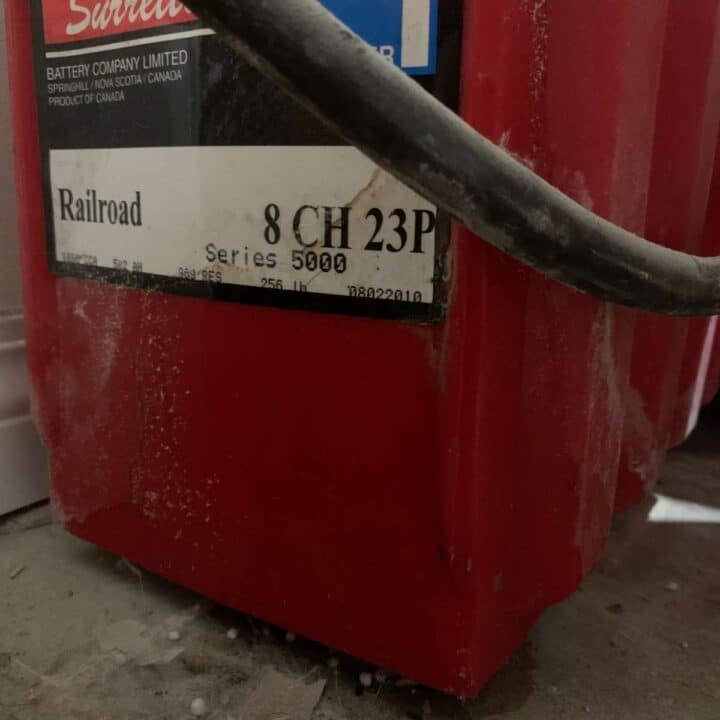
When we bought our home many years ago, it was already outfitted with a bank of Surette batteries. We later upgraded our batteries before switching to the current Powerwall.
An integral part of these systems is the battery bank. It stores surplus electricity produced during sunny or windy periods, ensuring uninterrupted supply even on cloudy days when your solar panels might struggle to generate sufficient amounts.
Inverters in Action - Converting DC Power to AC Power
An inverter is essential for any off-grid system. It converts DC electricity generated by solar panels into AC and uses the sun's power effectively. This makes it usable for common home appliances that run on AC power.
The Role Of Backup Generators
When natural light and wind are scarce, backup generators step in. These generate electricity to supplement or replace renewable sources during lean periods.
Over the years, we've run diesel generators and gasoline generators as backups during the winter. With our new system, we depend on solar exclusively from the end of April through October most years.
Designing Your Own Off-Grid Power System
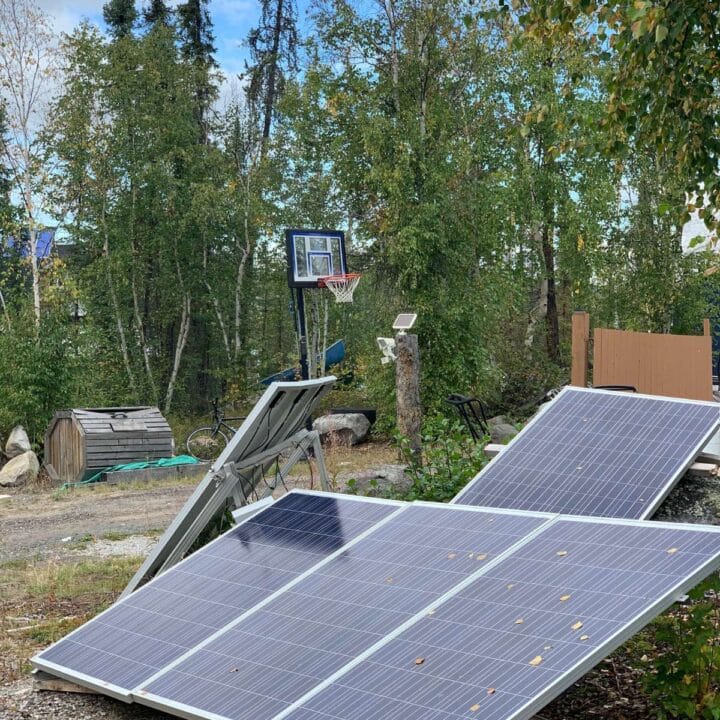
When constructing an effective off-grid power system, figuring out the amount of electricity you require for a life without being connected to the grid is critical. Figuring out the electricity necessary to operate devices and systems in your abode is key for an off-grid setup.
You must also size your solar panels accordingly, ensuring they generate enough electricity even on cloudy days. Consider the amount of sunlight available in your area and season when determining how much energy you will need to generate.
In our area, we get upwards of 20+ hours of daylight in the summer months but just 4-5 hours of sunlight in winter.
Generators - Consider Your Needs
Living completely off-grid means you're responsible for generating all the electricity you need. Therefore, consider what you'd need to run off a backup generator. And also consider the fuel costs. Diesel, propane and gasoline can be expensive.
However, a reliable backup generator provides a continuous supply without sun or wind during extended periods. It serves as an insurance policy against unexpected drops in renewable energy sources.
Energy Storage Options for Off-Grid Systems
An effective off-grid power system must include a means of storing energy. Many off grid homeowners use battery banks because they allow you to use the stored DC power later when required, such as during the night or when you get limited solar or wind power.
Your choice depends on factors like battery capacity, price, cost-effectiveness over time, and maintenance requirements.
Installation and Setup of Off-Grid Power Systems
Laying the groundwork for your off-grid power system starts with a comprehensive site assessment. It's important to examine sun exposure, potential obstacles like trees or buildings, and available space to optimize the positioning of your solar panels.
When installing solar panels, you have a couple of choices. A professional installation ensures safety standards for your area get met while maximizing energy generation. However, a DIY approach could be an option if you're handy, knowledgeable about solar and electricity and comfortable working on rooftops.
We have had solar panels professionally installed twice in the past, yet my husband has repositioned them and made adjustments as required over the years.
Connecting Battery Banks
Once your solar panels are in place, you'll need to set up battery banks to store all that renewable energy harnessed by your solar panels.
Remember, you need enough storage capacity to meet your daily needs but also to buffer against several consecutive cloudy days or days without wind.
Wiring Inverters
As mentioned above, your stored DC power won't run most household appliances - they require AC (alternating current). This is where inverters come into play: they convert this stored DC power from battery banks into usable AC electricity for powering devices within your home.
Wiring your inverter to connect to your battery bank, generator, solar panels or wind turbine can be complex. This task involves technical knowledge about electrical systems, so consider seeking help from a professional when wiring your inverter.
Cost Considerations for Off-Grid Power Systems
The expense of constructing an off-grid power system can vary by thousands of dollars. Factors like the type and size of the system, your energy consumption needs, and even geographical location can influence this.
Depending on the situation and location, a DC solar system could cost on average, $25,000 CAD in Canada, according to Bluetti. But if you need more flexibility in power sources or have higher energy demands - mixed off grid solar systems with DC and AC power could cost significantly more.
If wind is plentiful where you live and you're considering adding a wind turbine into the mix with an AC setup, expect costs between $20k-$80k. In fact, in 2023, Direct Energy suggests $65k USD if you're in North American.
Solely relying on solar? An AC solar configuration would run somewhere around $65K, according to a December 2023 article in This Old House.
Including a backup generator for those just-in-case moments will bump your budget further. Depending on the size and brand, expect to pay at least a few thousand dollars or more.
Comparing Costs Of Off-Grid Vs. Grid-Tied Systems
Remember, off-grid power system setups come with significant upfront costs. However, they can pay off over time by reducing or eliminating electric bills. Even better, you don't need to worry about power outages when the grid goes down due to weather or other unforeseen circumstances.
You may find you can install a hybrid system that allows you to generate your own alternative energy and even sell excess energy back to the grid. Take a look at a hybrid inverter to help with current conversion as well.
Financial Incentives For Off-Grid Power Systems
Besides financial independence from fluctuating utility prices, some areas offer incentives to encourage renewable energy use. Local governments may offer grants or tax credits as incentives to promote renewable energy usage, so it's worth researching what is available.
Research alternative energy grants in your area before investing in a new off grid power system.
Real-Life Applications of Off-Grid Power Systems
The beauty of off-grid power systems lies in their adaptability. They can be customized to suit the energy requirements in various circumstances, from rustic cabins in distant areas to city rooftops.
Off-Grid Power Systems for Remote Locations
Living far away from the hustle and bustle comes with its own set of challenges, which I've written about extensively over the years. The most significant challenge may be getting access to reliable electricity sources. Taking charge of your own energy production provides peace of mind as your home becomes more self-sufficient.
Off-Grid Living in Urban Environments
Now, you might think that going off-grid is just for people living outside city limits, as we do. However, when we drove across Canada this summer, we discovered that more city dwellers are turning to renewable energy sources like solar panels. They're reducing their dependence on utility companies while shrinking their carbon footprint, too.
Off Grid Power System FAQs
Have questions about off grid power systems? Please leave them in the comments below. In the meantime, here are a few questions people often ask us.
What is the most efficient off-grid power source?
Solar power systems, with solar panels and powered by the sun. This is because their scalability and solar power are often the top choices for off-grid energy.
What are the best power options for off-grid?
The ideal choices include a mult-source system, including solar panels, wind turbines, and backup generators. Mix them up based on your location's resources. (We have solar and backup generators and are exploring the possibility of a small wind turbine to use in the winter when we get very little solar power.)
What is an off-grid power system?
An off-grid system allows you to generate and store electricity independently from public utilities or main grid supply.
How much does it cost to go with an off-the-grid electric system?
This is a tough one because there are just so many variables. Keep in mind that the price can swing significantly. You could be looking at anything from $6k to $70k USD. This range depends on several factors, such as the size of your setup, whether you're using DC or AC systems, and if a backup generator is part of the package. Want more details? Check out this source.
Off Grid Power Systems More Accessible
Leaving the electricity network is easier than ever before. Become familiar with the basic components, and consider your location, potential alternative energy sources, system size requirements, costs, and financial incentives. Then you're ready to get started on your design for an off grid power system.
From remote locations to urban environments, going off-grid is possible anywhere. Take this newfound knowledge and plan your path toward self-reliance and energy independence today.
Like this post? Save it, share it, and read it!
